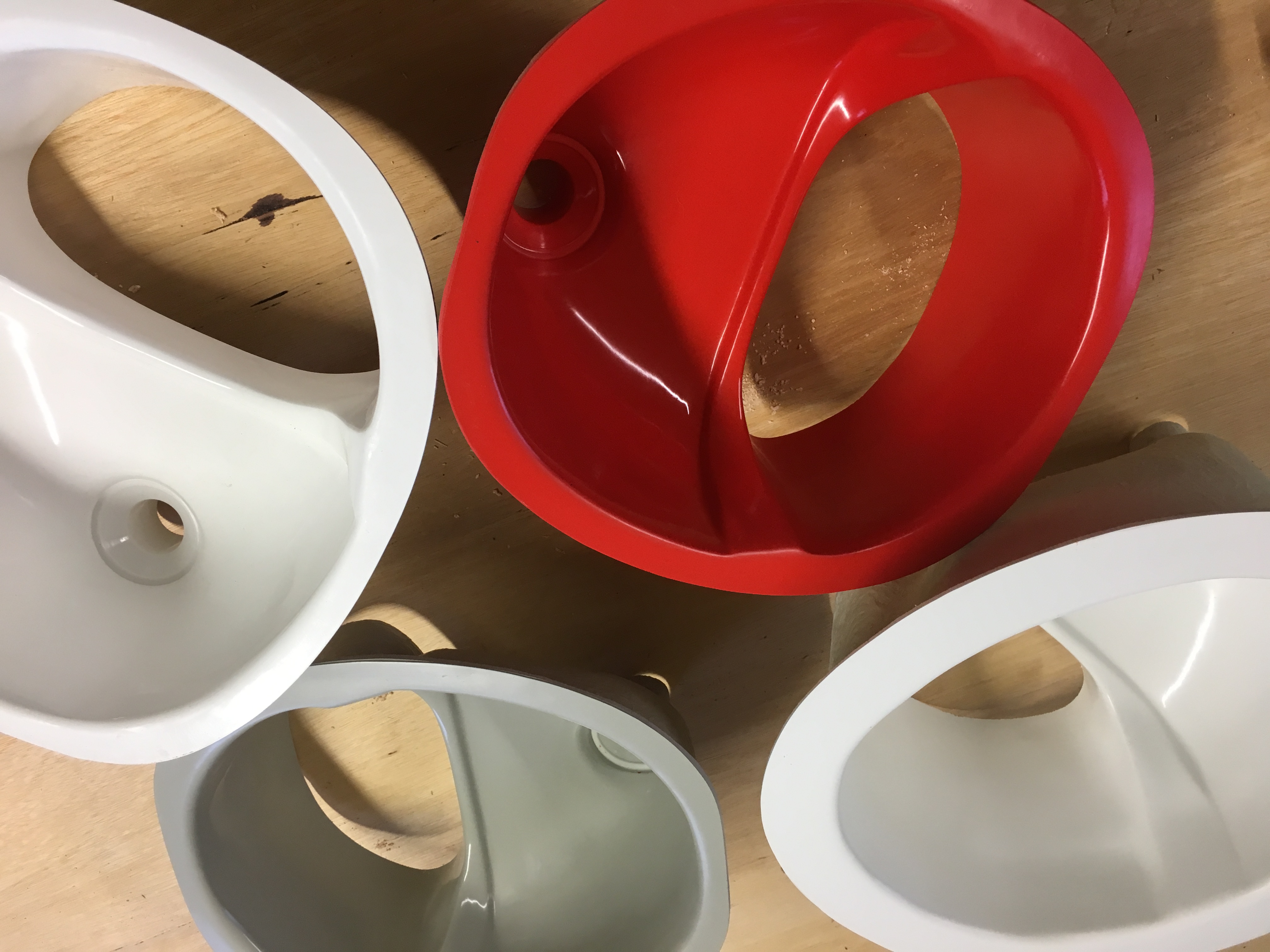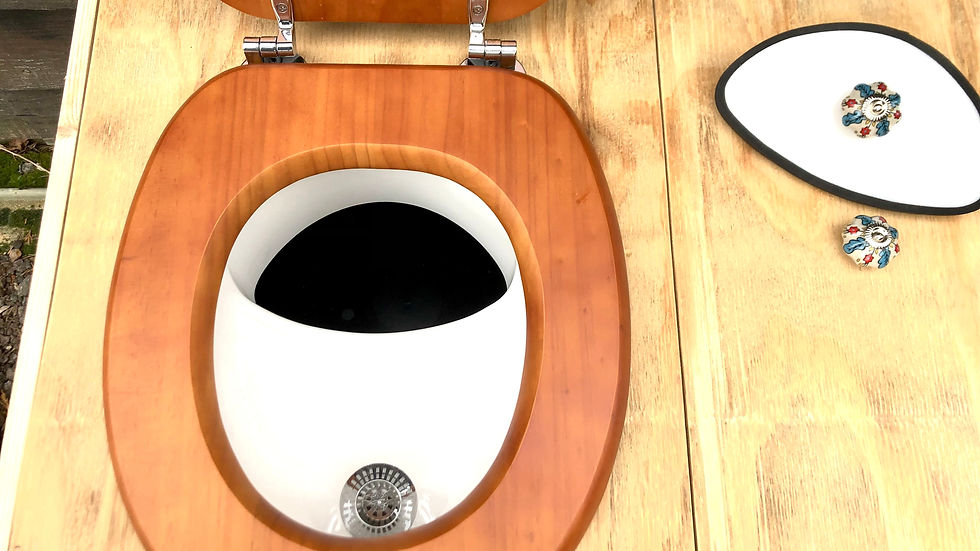How Compost Toilets Work and Their Benefits
- Scott Craig

- Aug 17
- 5 min read
A'right, folks, let’s dive into the world of composting toilets. Yip, those nifty little eco-friendly thrones that are changing the way we think about doing our business. If you’re tired of the same old flush-and-forget routine, or if you’re dreaming of living off-grid without sacrificing comfort, this post is for you. I’m here to spill the beans (or should I say, the compost?) on how these toilets work, why they’re awesome, and what to watch out for. Ready? Let’s roll!
The Magic Behind How Composting Toilets Work
First things first, how do these things actually work? It’s not rocket science, but it’s pretty clever. Composting toilets take your waste and turn it into compost. Yep, that’s right - your “business” becomes garden gold. Here’s the lowdown:
Separation or no separation? Some composting toilets separate liquid from solid waste, while others mix it all together. Separating helps speed up composting and reduces smell.
Decomposition or desiccation? The secret sauce is let it be until the compost heap. The sawdust keeps things pretty much dry and hibernating until you put in the compost bin, then it breaks down.
Add some carbon: To keep things balanced, you add carbon-rich materials like sawdust, soil, or coconut coir. This helps absorb moisture to keeps odours at bay.
Ventilation pipes and fans: they're nae required because of the nature of the dry doo doo. Things really start full swing in your compost bin.
Time and patience: Composting takes time. Depending on the system and usage, it can take a few months to a year for the waste to fully break down into safe, usable compost.
The end result? Nutrient-rich compost that can be used to enrich soil (with some caution and local regulations in mind). It’s like turning your toilet into a mini eco-factory!

Caption: A close-up of a composting toilet setup.
Why You’ll Love Using Composting Toilets
Now, let’s talk benefits. Why should you consider swapping your flush toilet for a composting one? Here’s the scoop:
Water saver extraordinaire: Traditional toilets gulp down gallons of water every flush. Composting toilets? They use little to no water. That’s a win for your water bill and the planet.
Off-grid friendly: No sewer hookup? No problem! Composting toilets are perfect for cabins, tiny homes, boats, and remote spots where plumbing is a pain.
Eco-friendly vibes: By recycling waste into compost, you’re closing the loop and reducing pollution. It’s like giving back to Mother Earth every time you go.
Less stink, more fresh: When properly maintained, these toilets don’t smell like you’d expect. The carbon materials and ventilation keep odours in check.
Easy on the wallet: Sure, the initial setup might cost a wee bit, but you save on water bills and septic maintenance in the long run.
Simple maintenance: Regularly adding carbon material and emptying the compost chamber is straightforward. Nae plumber calls needed!
If you’re curious about making the switch, check our compost toilets for some great options that make eco-living a breeze.

Caption: Eye-level view of a rustic composting toilet.
What are common problems with composting toilets?
Alright, let’s keep it real. Composting toilets aren’t magic pixie dust. They come with their quirks and challenges. Here’s what you might bump into:
Odour issues: If the balance of carbon and moisture is off, or ventilation is poor, you might get some funky smells. But hey, that’s fixable with a little tweaking.
Maintenance neglect: These toilets need regular attention. Forget to add carbon or empty the compost, and you’ll have a mess on your hands.
Pests: Flies and other critters can be attracted if the system isn’t sealed well so get a modesty bung to keep it nice.
Learning curve: It takes a bit of getting used to. You might feel weird at first, but soon it’s second nature. Enjoy the nae flush and peace and quiet.
Space requirements: Some composting toilets need a bit more room than an normal loo, so plan accordingly.
But don’t let these hiccups scare you off! With a bit of know-how and care, these issues are manageable. Plus, the benefits far outweigh the headaches.

Sawdust for Composting Toilets
Sawdust is an excellent material for use in composting toilets, as it offers several benefits:
Absorbency: Sawdust effectively absorbs moisture, which helps to manage odours and maintain a balanced composting environment.
Carbon Source: It serves as a carbon-rich material, which is essential for the composting process and helps to balance nitrogen-rich materials.
Odour Control: The use of sawdust can help to mask unpleasant smells and promote a more pleasant experience when using the composting toilet.
Ease of Use: Sawdust is easy to sprinkle over waste after each use, making it simple to maintain the toilet.
Availability: It is often readily available and can be sourced from local woodworking shops or lumberyards.
How to Use Sawdust in a Composting Toilet
After each use of the toilet, sprinkle a layer of sawdust over the waste.
Ensure that the sawdust covers the waste completely to minimize odours.
Add additional sawdust as needed to maintain the right balance of materials in the composting chamber.
Periodically check the moisture level to ensure optimal composting conditions.
Choosing the Right Type of Sawdust
When selecting sawdust for your composting toilet, consider the following:
Type of Wood: Avoid sawdust from treated woods or those that may contain chemicals. Opt for natural, untreated wood sawdust.
Particle Size: Finely shredded sawdust is preferable, as it compacts well and absorbs moisture effectively.
Source: Ensure that the sawdust is clean and free from contaminants.
Conclusion
Using sawdust in a composting toilet can greatly enhance the composting process, control odours, and create a more pleasant experience. By following the guidelines above, you can effectively incorporate sawdust into your composting toilet system.
Tips for Getting the Most Out of Your Composting Toilet
So, you’re sold on the idea and ready to jump in? Sweet! Here are some handy tips to keep your composting toilet happy and healthy:
Add carbon regularly: Sawdust, peat moss, or coconut coir are your best friends. Keep a stash nearby and sprinkle after each use.
Keep it ventilated: Make sure the vent pipe or fan is working well. Good airflow is key to odor control and composting speed.
Empty on schedule: Don’t wait too long to empty the compost. Follow manufacturer guidelines and local regulations.
Avoid chemicals: No bleach, harsh cleaners, or non-biodegradable wipes. These kill the microbes doing the hard work.
Stay dry: Too much liquid slows composting and causes smell. Use urine diversion if possible or add extra carbon to soak it up.
Educate your household: If you’re sharing the loo, make sure everyone knows the rules. Teamwork makes the dream work!
By following these tips, you’ll keep your composting toilet running smooth and smelling fresh.
Why Composting Toilets Are a Game-Changer for Sustainable Living
Let’s wrap this up with a little heart-to-heart. Composting toilets aren’t just about saving water or avoiding septic tanks. They’re about changing the way we live. They’re about taking responsibility for our waste and turning it into something valuable. They’re about living lighter on the land and leaving a smaller footprint.
Every time you sit down on a composting toilet, you’re making a choice. A choice to conserve, to recycle, to respect the planet. And that’s pretty cool, right?
So, if you’re ready to join the green revolution, why not start with your loo? Check out compost toilets and see how easy it is to make a big difference - one small step at a time.
Go on, give it a whirl. Your garden (and the planet) will thank you!



Comments